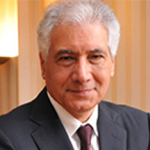Education can be a powerful force in the process of speeding up economic growth, improving income distribution and facilitating upward social mobility. It could also improve the quality of life (e.g., through its effect on life expectancy, fertility rates and infant mortality rates) as well as the nature of governance in a given society (through its effect on citizens’ awareness and political participation). It is important to note, however, that these outcomes are neither automatic nor inevitable. Achieving them requires several prerequisites, including adequate financial resources that are allocated both efficiently and equitably. The focus of this Policy Research Report (PRR) is on the extent to which this prerequisite is met with respect to higher education in 6 Arab countries: Egypt, Jordan, Lebanon, Morocco, Syria, and Tunisia.
The report contains 6 chapters, each covering one case study, and a comparative chapter. By design, each country study deals with the same set of issues: an assessment of the adequacy, efficiency and equity of financing of higher education; an analysis of future financing challenges; a critical review of reforms to date; and recommendations to deal with the identified problems. To facilitate inter-country comparisons, the Egyptian case study was prepared ahead of the other cases.
The findings of the analysis are most revealing. For example, it turned out that the pattern of financing higher education at present is rooted in the socio-political history of the country in question (with Lebanon and Egypt providing clear examples). It was further shown that all countries in the sample could benefit from further reforms to better mobilize and allocate their resources. While some countries did better than others, the least performing countries were found to be the most vulnerable in terms of meeting future financing challenges. Finally, with the exception of Lebanon and Jordan, the rest of the countries studied are well advised to engage the private sector to a larger extent in higher education thereby allowing themselves to devote scarce government resources to basic education.
Besides being analytical, the report offers a menu of policy options to deal with the financing problems of higher education. I am certain the readers, especially policymakers among them, will find the report both rich in details and highly informative.

Research Fellows
Ahmed Galal
Chairman of the Board of Trustees, Economic...

Senior Associates
Taher Kanaan
Arab Center for Research and Policy Studies


